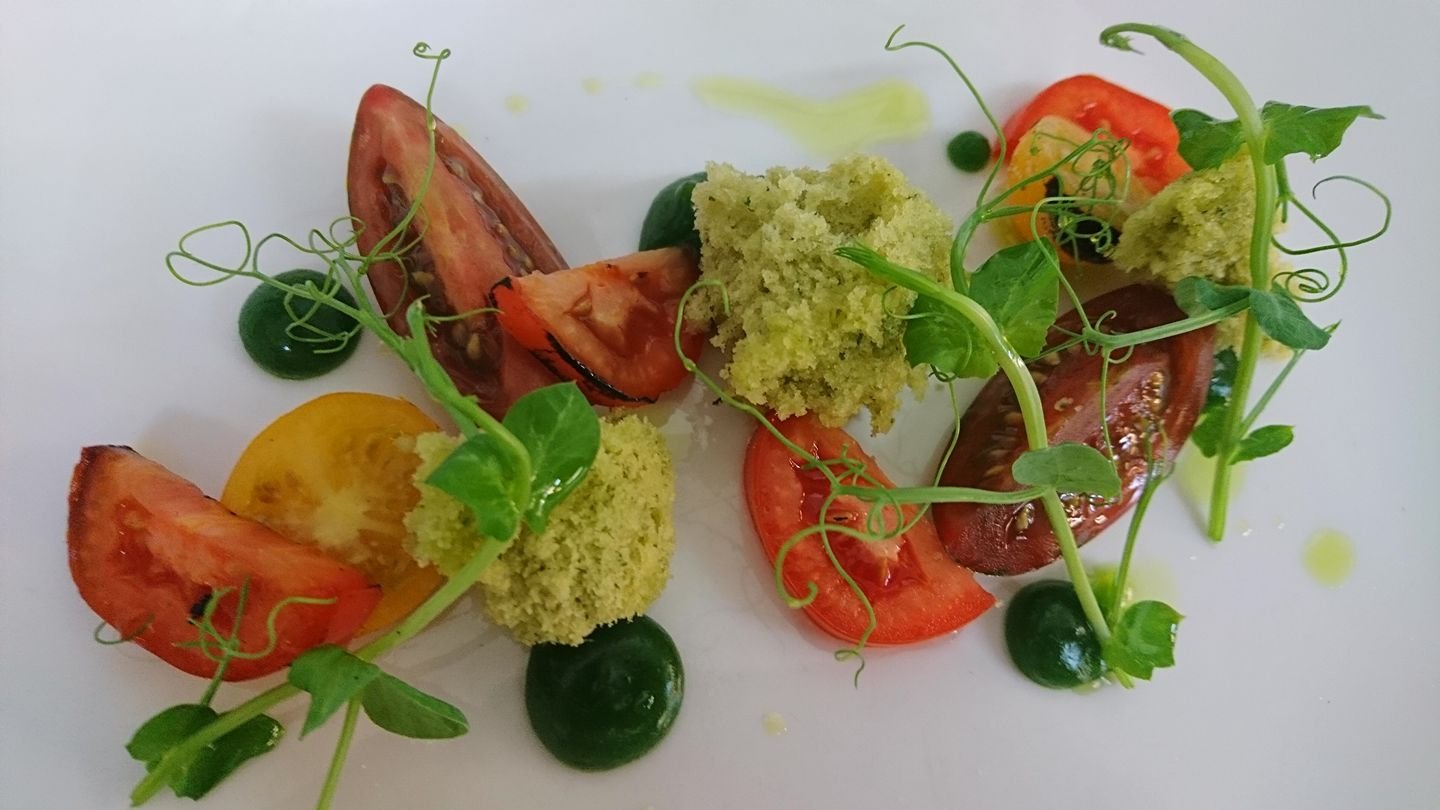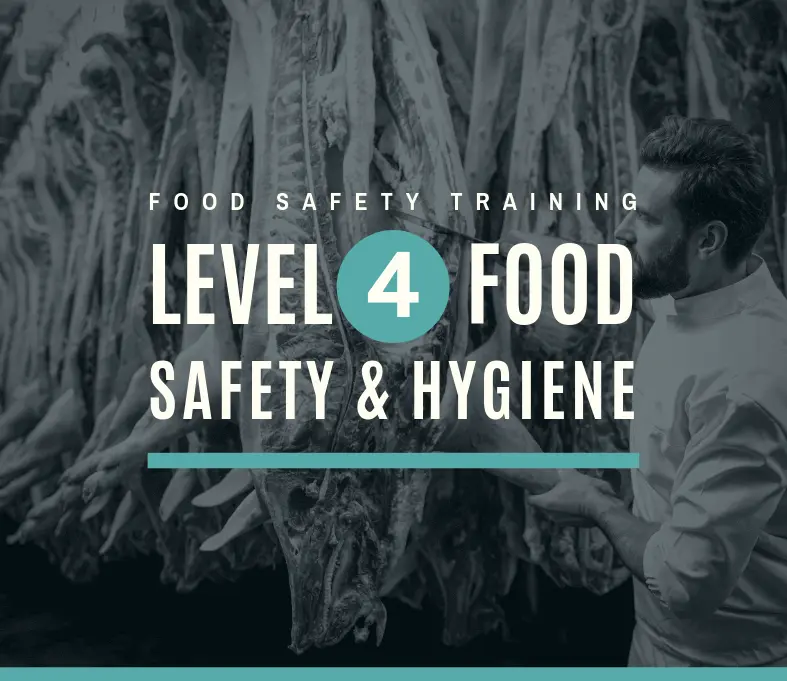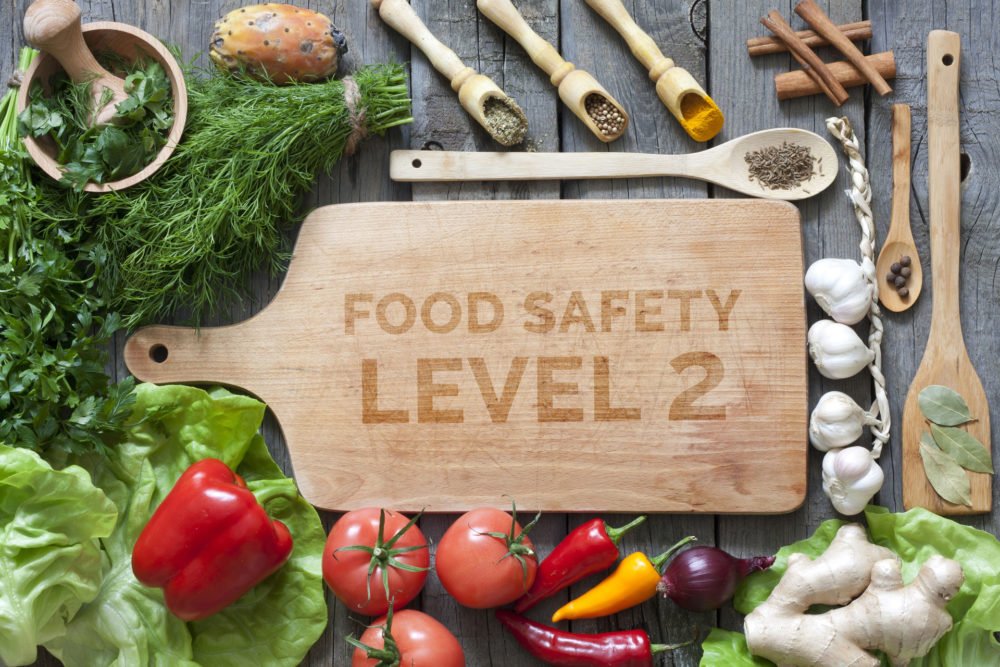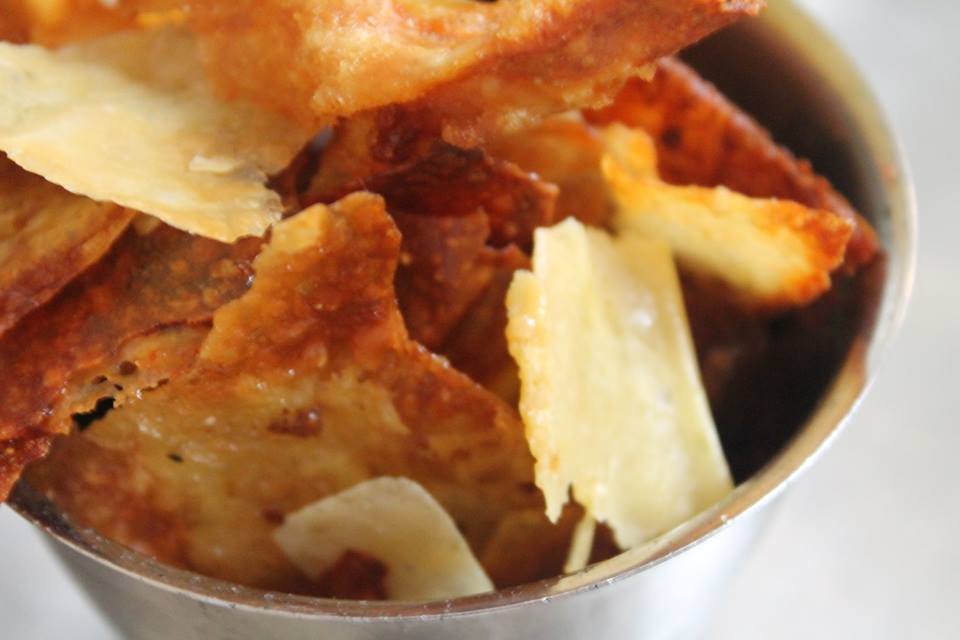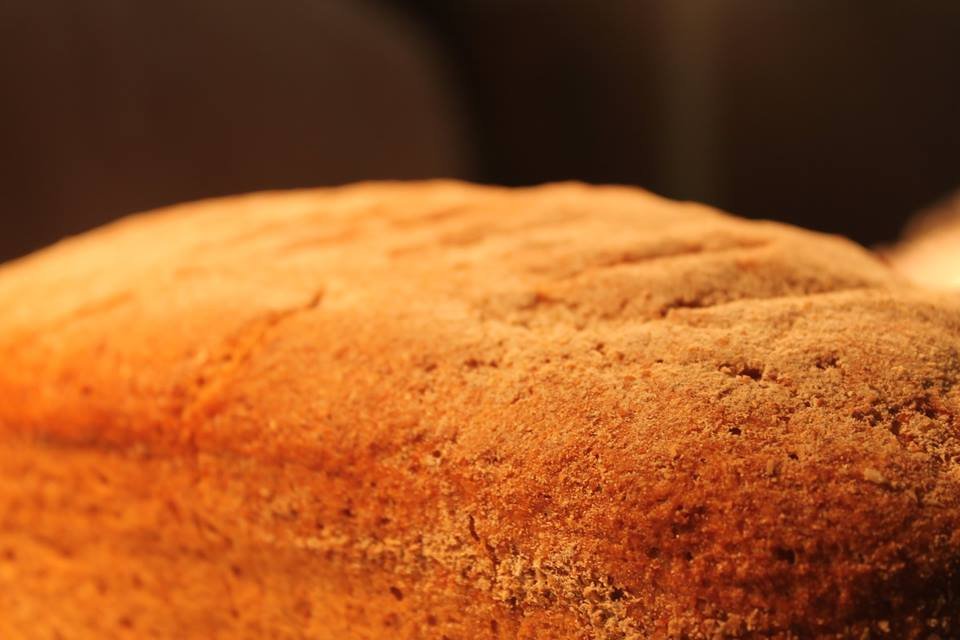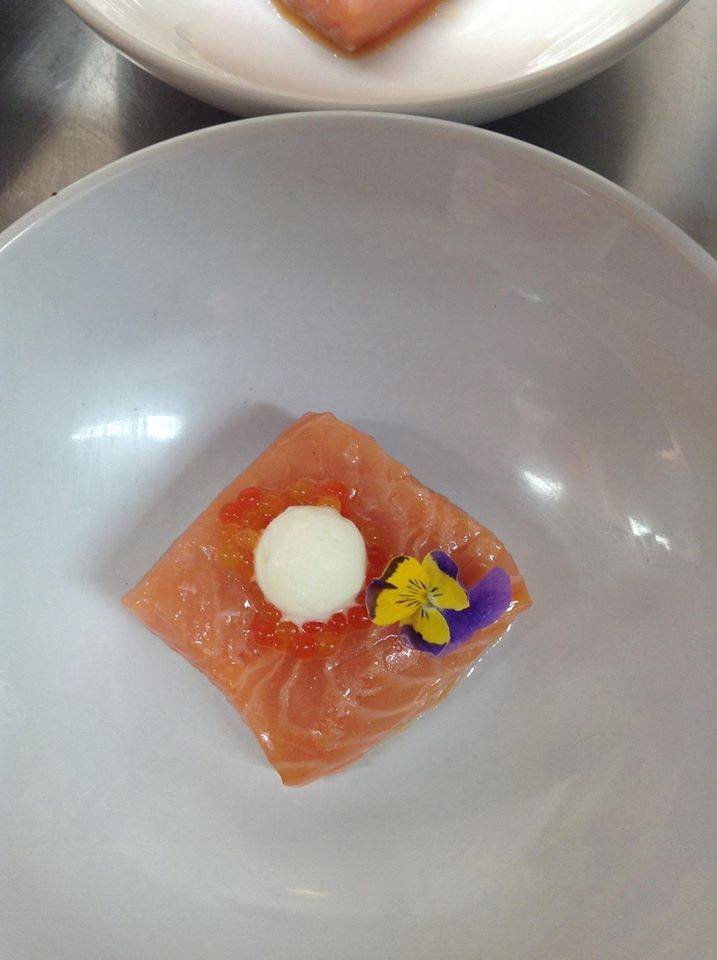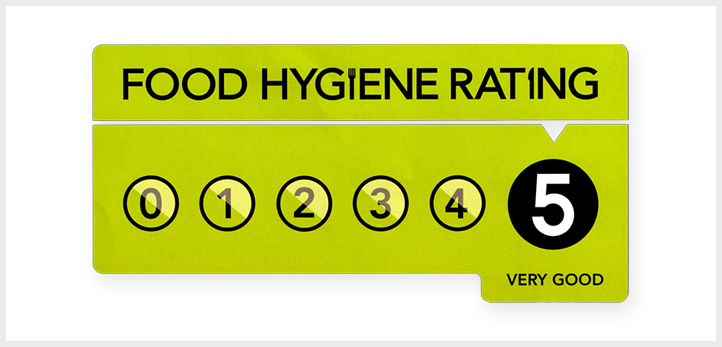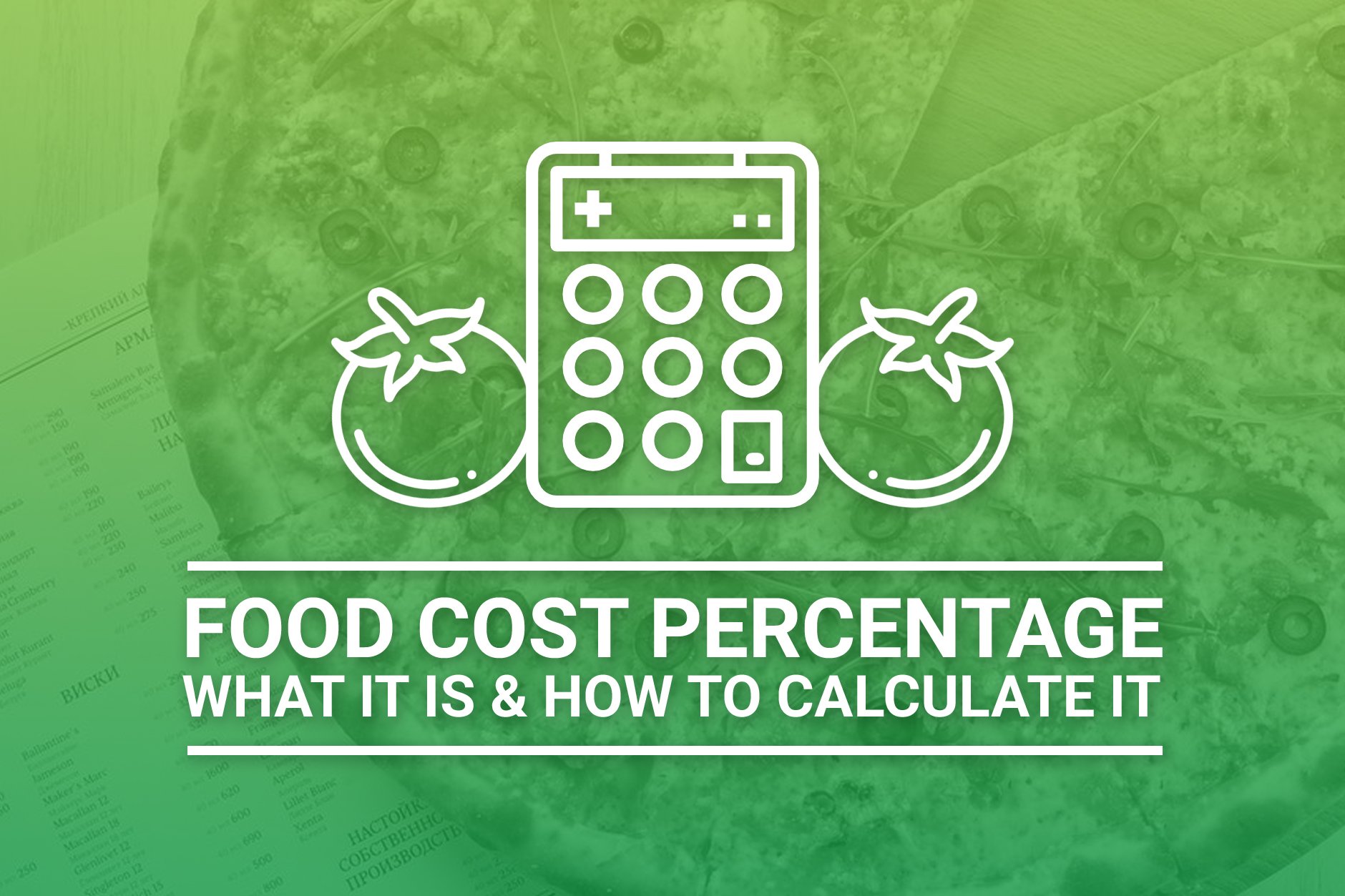-
Posts
11 -
Joined
-
Last visited
-
Days Won
2
Content Type
Profiles
Articles
Food4Kids
Heatstress
Not On The Menu
Food Forum
Store
Everything posted by Brendon
-
Happy 2024 all 2023 leaves us and the new year once again brings new challenges and expectations of the year ahead. Legislation changes: The main focus of changes come in zero hour contract workers, Holiday entitlements and requirement for an employers duty to prevent sexual harassment A detailed report on these changes and dates can be found here: Employment law changes to expect in 2024 - Personnel Today WWW.PERSONNELTODAY.COM From the day-one right to request flexible working to rolled-up holiday pay, these are the employment law changes in 2024. Food Safety Updates: Last year we saw the introduction of the first major nutritional information regs for the hospitality sector affecting the more larger organisations and this trend will continue over the coming decade with year by year changes to slowly introduce further information to consumers. The FSA (Food Standards Agency) have agreed to strengthen allergen information to consumers and will be proposing this to ministers in the coming months. The main change they are focusing on is the requirement of written allergen information across the board. If approved, this will mean it becomes a legal requirement for businesses to have written allergen information available for guests & customers to view. Whilst I believe the normal allergen matrix will be accepted, I also have a reserved intuition that allergens written on menus may become a legal requirement and potentially a full ingredients list creeping its way into law. Ones to watch (Recently discussed and circulating): - Allergen incident reporting similar to HSE's health and safety RIDDOR system. Such as 'near misses', 'minor' & 'major' - Mandatory display of food hygiene rating in England (Wales has seen a significant increase in ratings of 5 since it became mandatory for all food businesses to display their rating on the entrance) - Mandatory food safety training ( a little vague at the moment, but discussions are ongoing about the training requirements of food handlers which may see a similar legal system as the CPC training required of HGV drivers being taken on a regular 2-5 year cycle) Labour changes, Increase to minimum wage and expected GP changes: How many businesses are struggling at the moment? I'm sure we've all seen the latest news and articles about another great pub, restaurant or eatery closing down. In October 2023 I completed a thorough analysis of hospitality increases with labour, supplies, rates and overall utilities year on year with normal annual increases ranging at 5-7%. 2022-23 saw an average of 14% increase and 2023-24 is looking similar but may peak at 20% for some businesses depending on labour and utilities, and whether corporation tax will remain at 25% in April. Working off these increases, a normal 75% target on food GP in 2015-2019 would have meant a 79-81% target GP in 2023 to achieve the same level of profit margins (targets of 10-15% NET) without consideration to any loss of trade due to the cost of living affecting the general consumer pockets. In 2024 I expect a target of 79% to be a reasonable expectation for most food businesses and I would be implementing these changes in the early January-February menus to be ahead of the 10-14% wage increases due in April. New hourly rates for April 2024: National Living wage (21 & Over): £11.44 Per Hour 18-20: £8.60 Per Hour Under 18's & Apprenticeships: £6.40 Per Hour Labour & Worker trend/culture changes in 2024: As seen in recent workplace tribunals and with further changes to legislation, 2024 should will be a major shift in HR management. Focus however should not be on 'tip toeing' around hoping that something doesn't happen or someone doesn't say/do the wrong thing. Focus should be on everyone recreating a good workplace culture and getting everyone on board with the changing the norm.
-
-Use this mock test to see what your staff know about food safety. You can copy & paste this into a word document or get staff to view this post and write their answers on a plain pieces of paper. If individuals struggle with writing, have them complete it verbally. (Marks are for guidance when completing normal NCOH courses) The following paper is a practice of a Level 4 NCOH exam in managing food safety in hospitality. The first part will be a 30 short question exam and the second part a 6 question extensive written exam. The first part should be completed in under 1 hour, 30 minutes. The second part should be completed in under 3 hours. Both of these sections will give you an idea of the knowledge level expected when you take the real Level 4 exam. 1: What does food safety mean, and what does it involve? (4 marks) 2: List at least 6 of the 14 allergens we must declare and give examples of foods these allergens may be found (12 Marks) 3:List some shapes of bacteria (what they look like). (2 Marks) 4: ATP swabbing can be used in swabbing, Explain your understanding of ATP (2 marks) 5: Explain your understanding of an Endotoxin (2 marks) 6: List some Anaerobic bacteria (2 marks) 7: The Shigella Sonnei bacteria can cause what bacillary illness? (1 mark) 8: HUS (Hymolitic Uraemic syndrome) is caused by what bacteria? (1 mark) 9: The Gram Staining process helps us identify what characteristic of bacteria? (1 mark) 10: What are the symptoms associated with Norovirus? (1 Mark) 11: Give some examples of low dose pathogens? (2 Marks) 12: List some materials & characteristics that would be satisfactory for the construction of walls in a food room (2 marks) 14: Explain your knowledge of what is involved in verification when relating to the principles of HACCP (2 Marks) 15: The German Cockroach is a common food pest in the UK, What other name is it known as? (1 Mark) 16: What pathogenic bacteria is associated with Raw poultry? (2 Marks) 17: Vibrio Parahaemolyticus is often associated with what food types? (1 Mark) 18: A BPCA contractor will assist you in what? (1 Mark) 19: List some BS EN codes and what they are commonly used for: (3 Marks) 20: What is the managers role in personal hygiene? (4 marks) 21: What does the Flagellae help a bacteria with? (1 Mark) 22: Explain what 4 processes can be used in cleaning? (2 Marks) 23: What are the 3 characteristics of a detergent? (2 Marks) 24: What does a CCP mean and when is it used in HACCP? (2 Marks) 25: Explain what should be included in a cleaning schedule: (4 Marks) 26: List some types/species of Parasite (2 marks) 27: Explain your knowledge of sterilisation and how it can be achieved (2 Marks) 28: How soon must you notify the council of changes to the food business? (1 Mark) 29: Staff are not following your company food safety policies, what action could you take? (2 Marks) 30: A verocyto toxin is released by what bacteria? ---------------------------END OF SHORT QUESTIONS------------------------------- Introduction to extensive questions: In your examination, you will be presented with 6 questions. You only need to answer 4 of them. Each question is worth 15 Marks. It is expected that each question will require 2-3 sides of A4 to be a pass mark of 12. Use these questions as a practice without your resource books: 1: Head office has asked you to provide a 1 hour training presentation for all other head chefs across the country; a - You are expected to talk about the bacteria E coli O157 B - You are expected to talk about maintenance of the food environments C - The third subject will be a choice of your own. Explain what you will talk about in these subject going into as much detail as possible. 2: You are opening a new food business and need to develop a HACCP from scratch. Explain how you would go about this process and what your first priorities would be before conducting a Hazard Analysis. 3: Your staff have reported cockroaches present in the dry stores area of the kitchen. They are unsure of the type of cockroach or what they look like. A - Explain what questions you would ask the staff and why you would ask them these questions. B - What would your next actions be after the questioning of staff? 4: The staff Personal Hygiene Policy (SOP’s) needs creating after an EHO improvement notice. Write out an example Policy: 5: You have started cooking food using Sous vide involving water baths. A - What hazards are involved? B - What controls measures could you use? C - How will you train junior staff on sous vide food safety? 6: A customer has called you early this morning letting you know they have a severe allergy to milk. Your kitchen actively handles milk and milk powder in a large proportion of recipes. A - How will you prepare staff for this situation? B - What steps/measures will you take to ensure the food is safe to eat for the customer? C - What will you do if the customer has a severe reaction in your restaurant? (Both during an after the event)
-
-Use this mock test to see what your staff know about food safety. You can copy & paste this into a word document or get staff to view this post and write their answers on a plain pieces of paper. If individuals struggle with writing, have them complete it verbally. (Marks are for guidance when completing normal NCOH courses) 1) Name at least 1 Pathogenic Bacteria commonly associated with raw poultry (2 Marks) - - _____________________________________________________________________ - _____________________________________________________________________ 2) When should you wash your hands whilst working in a kitchen? Name as many as possible. (4 Marks) - - _____________________________________________________________________ - - _____________________________________________________________________ - - _____________________________________________________________________ - - _____________________________________________________________________ - - _____________________________________________________________________ 3) What is the maximum Legal temperature for storing cold ‘ready to eat’ foods? (1 Mark) ℃ 4) What is a common source for the pathogenic Bacteria ‘Staphylococcus aureus’? (1 Mark) _____________________________________________________________________ 5) What Symptoms does a ‘Carrier’ show in regards to food poisoning bacteria? (1 Mark) _____________________________________________________________________ 6) Name at least one food product associated with Acrylamide (2 Marks) - - _____________________________________________________________________ - - _____________________________________________________________________ 7) What can cause an ‘Anaphylatic shock’ when thinking about food safety ?(1 Mark) _____________________________________________________________________ 8) Name at least 2 food products that contain Gluten (2 Marks) - - _____________________________________________________________________ - - _____________________________________________________________________ 9) What is the legal Temperature ‘Re-heated’ food must reach before being served? (1 Mark) ____________________℃ 10) How many times can cooked food be re-heated? (1 Mark) _____________________________________________________________________ 11) What does HACCP stand for?(2 Marks) H____________,A____________,C______________,C____________,P____________. 12) How long must you wait before returning to work after the symptoms of sickness & Diarrhoea have cleared? (1 Mark) _____________________________________________________________________ 13) Bacillus Cereus is a pathogenic bacteria commonly found in what food product? (1 Mark) _____________________________________________________________________ 14) Give an example of Cross contamination. (1 Mark) _____________________________________________________________________ 15) Name at least 2 signs pests have been present in a food room. (2 Marks) - - _____________________________________________________________________ - - _____________________________________________________________________ - - _____________________________________________________________________
-
-
HACCP is Hazard Analysis Critical Control Points and is the simple process of identifying the individual hazards in a food environment and putting in specific critical control points. HACCP is a very complex subject and a specific subject in hospitality you must have been trained on to legally put into place in a pub, restaurant or any food environment. (Legally you cannot create your own food safety management documentation without first receiving some form of HACCP training) What are the 7 principles of HACCP: Hazard Analysis: The first part is identifying which particular hazards could be present in your food/dishes and breaking them down into categories, in your recent food hygiene courses you will know their are now 4 different types of contamination: 1. Microbiological (Bacteria, Viruses) 2. Chemical (Bleach, cleaning solutions) 3. Physical (stationary, hair, metal) 4. Allergenic/intolerance (Gluten, Nuts, Dairy) If we were to say a chicken breast, we can immediately identify the bacteria salmonella & campylobactor as certain, and also the potential risk of bones from poorly butchered chicken. But now take a second and think about all potential hazards that a single chicken breast may bring or have future effects if consumed down the line. With that information we then start identifying CCP or critical control points at each step in the foods life. Continuing with the chicken breast its going to be delivered and stored at a safe temperature, and then prepared and handled safely using the correct chopping board, knife, gloves and so on. Then your going to cook it thoroughly so it reaches a safe temperature to be consumed by the guest. In the whole life of this chicken breast we have several points that are critical for the end products safe consumption: 1. delivery (safely delivered/correct temperature) 2. Storage (Suitable fridges/working correctly/ suitable food storage contrainers/ pest free) 3. preparation (suitable equipment and work surface/ isolated raw food area) 4. cooking/reheating (suitable equipment/ cooked to a safe level) 5. serving (crockery suitable to serve the chicken breast = not chipped/broken) Each one of these points is a critical control point as you need to do something to keep the food safe. Critical limits: Critical limits are the absolute limit for that critical control point (CCP): 1. You decide that a fridges limit is no higher than 5'C and define that as a critical limit 2. You decide that cooking the chicken breast must be done at 75'C for 30 seconds. Its as simple as that Monitoring procedures: With every Critical control point, you will have set a critical limit. Now you need to monitor them. rather than give you the full rundown here's the most common monitoring procedures we use in hospitality: 1. Visual inspection 2. Digital fridge/freezer displays 3. Probes Corrective actions: Corrective actions are when you monitor a specific Critical Control Point (CCP) and the results show the food it outside the critical limit. This may be a fridge displaying 10'C or the cooked chicken breast showing 66'C. Your corrective actions will be what you will do in the situation where food it outside of your defined limits. Sometimes its as simple as "continue cooking the chicken breast" or it can be "Throw the food away". Verification procedures Verification is where you, the team, and anyone else come together and make sure everything is suitable for the operation. For instance you might want to cool food down from boiling hot to 5'C in 10 minutes, but the kitchen doesn't have a blast chiller or suitable means to chill it down so therefore by doing the verification with other staff and running trials of the HACCP and your safe methods Documentation: This includes all your planning, your calculating of what hazards you need to control, a list of your suppliers and what checks you've done on them...........plus the daily checks you complete to monitor and state everything is okay or if you have any problems. Final Notes: HACCP is never going to be a 1 day job even if you do very simple food in a small cafe. fully qualified HACCP professionals can take a whole week to construct a simple straightforward food safety management document to get the business started. But then this will need continued work as the business develops.
-
Ingredients: – 1 kg strong white flour ( Bread Flour) – 30g Yeast – 20g sugar – 575g warm water (35-40’C) – 100g Oil – 20g Salt 1. Activate yeast, sugar, water, oil together in a jug until foam forms at top (this will come through the oil) 2. Mix flour and salt together (+ any flavorings you wish, try rosemary & Truffle, or onion and sesame) 3. Add yeast mixture to flour mixture and knead until dough becomes elastic (the dough shouldn’t tear and should be slightly firm) 4. Leave to prove in a bowl for 60 minutes at 38’C (rationale setting on oven). ensure you have wet the dough so the yeast does not dry out. 5. knock the dough back and knead until firm, either portion into bread rolls (45 – 55g rolls) or loaves (4 loaves out of one batch) For rolls: prove for 40 minutes For loaves: Prove for 70 minutes Set the oven to baking bread setting (or 200’C with 15% steam) Bread rolls will take approximately 10-15 minutes Bread Loaves will take approximately 20-25 minutes Notes: – Cook for half cooking time if preparing in advanced (if the bread will be left for 4+ hours before being served). cook for the remainder time at 180’C = 20 minutes before service Allergen Present Gluten Yes Milk/ Dairy Soy/soya Check oil used Nuts Peanuts Celery Fish Crustaceans Molluscs Lupin Sesami Sulphur Dioxide Egg Mustard Dietary/ General Information Suitable = Yes/ No Vegan NO Vegetarian Yes Gluten Free / Ceoliac No Lactose Intolerant NO Diabetic Yes Halal Yes High risk food? No Shelf Life 3 Days (Best Before) Freezer Life 3 Months
-
5 pieces of advice for any new commis chef; “1 - Be prepared to work incredibly hard if you want to be successful. 2- Every chef is always learning (Even your head chefs…especially your head chefs). If another chef tells you they know everything, they’re lying. 3- Cooking & Hospitality is not difficult in it’s concept. All the dishes, presentation and service are many small components/elements combined together to make something perfect 4- Ask Questions at every moment you get, Listen to what others tell & teach you, Watch every other chef and how they do things. To be successful you always need to be learning and finding the best way to complete every task. 5- Most important; When you finish work, make sure you don’t take the work home with you. Remember to switch off, relax and enjoy every moment you have out the kitchen. What happens in service, stays in service.” What does a commis chef do and how they work in a professional kitchen? A commis chef is most often known as an apprentice or trainee chef in most professional kitchens. They aren’t usually specialized in a particular skill or section but sometimes you may find commis chefs training in the specialist area of patisserie (usually when they are passionate about becoming an accomplished pastry chef). Commis usually complete the ‘grunt’ tasks in a kitchen which only require a basic level of knowledge, these tasks can involve; - Vegetable preparation - Meat and poultry preparation - Basic cooking tasks such as soups, sauces & stocks - Basic bread & basic baking - Herb & Garnish preparation - Working directly under a chef de partie learning a section In addition to general workplace tasks, the commis will be required to keep the section they work on clean & tidy at all times. They will also be required to assist in the setting of mise en place for both preparation and services including topping up throughout the day. A good commis chef should always carry a pocket notebook on themselves to write notes, recipes and important lessons they learn on the go. “I myself still carry notebooks 17 years after my first commis job. I have hundreds of them, some with simple recipe multiplications, others with the best recipes on sauces, breads and cakes.” As a commis, you can expect to be doing very similar jobs day in day out, and this may test your passion and commitment. However all the simple things such as picking herbs, peeling vegetables or descaling fish are part of your conditioning as a professional chef. “ask any chef, every classically trained chef will have had to commit to a few thousand hours of ‘boring’ jobs before getting the chance to cook or make it on the pass” 10 key targets for fast progression/promotion as a commis chef: 1- Personal presentation; You should hold yourself to high standards before entering a kitchen. Be clean, well groomed and presentable in clean ironed chef uniform. 2- Punctual; Being on time for every shift and ready to work at the designated start time (don’t turn up at your start time and them proceed to get changed. Be changed and ready for work on the start time) 3- Equipped for work; You should have all your knives (sharp & maintained), A pen/notebook and any other pieces of equipment you need for your job (this may change depending on your workplace, establishment or type of section you are working on) 4- Attentive and eager to learn; You should listen to all instructions and guidance so you fully understand what you are being asked to do. (Use your notebook to help you remember) 5- Keep a clean & tidy section at all times; It is very easy to be labelled a ‘messy chef’ and very hard to remove that label. You should always clean as you go, and any moment you get chance you should wipe your section down with soapy water and disinfectant. 6- Always set professional goals; Regardless of your rank/position, you should be setting yourself goals and targets. Even something as simple as peeling/chopping carrots can be a target (last week it took me 2 hours to prepare 50kg of potatoes, This week my personal target is 1 hour 40 minutes) 7- Labels, Labels, Labels; Many chefs fall into the habit of labelling at the end of the day rather than as they complete each task. If you label as you go, you will save a long winded task at the end of the day. 8- Leave your section in perfect condition; Goes without saying, leave your section as you expect to find it. 9- Be consistent in your approach to work. To be successful in hospitality you need to be as eager, attentive and as passionate everytime you turn up to shift. 10- Enjoy what your doing. It’s very easy to become complacent and bored with your work. It’s vital that you enjoy the career path you’ve chosen as it’s very hard with long hours. If you don’t enjoy it the likely chance is you wont perform to the best of your ability. Knowing your section and how to work. Wherever you work, you are likely to be given a workbench/section to complete all your tasks. This space becomes your home for the day, And you need to treat it like a home; - Keep it clean - Keep it tidy - Keep it organised - Know where everything is There are 4 key things you need to setup your section for any type of hospitality work; 1. Chopping boards; 90% of your preparation will involve chopping boards. Make sure you have the suitable boards for the job and avoid having raw and ready to eat boards on the same workbench. 2. Waste bowl; Also referred to as a section bin is important to avoid cluttering your section with mess whilst you prep 3. Soapy water/ Sanitiser; Having these on your section helps you stay clean and tidy. It also keeps the food you are serving safe. 4. Spoons; You should always have spoons on hand for tasting/mixing/serving. These should be clean and any dirty/used spoons disposed of. (don’t mix used spoons with clean ones. It’s a bad habit) Seasoning & Balance You will hear plenty of chefs talk about ‘balance’ and be told about seasoning Balance is about understanding the food/dish you are creating. Some foods will be sweet, others salty, and some acidic or bitter. When creating dishes it is important that you find the balance of each food/ingredient to create the perfect dish. A well accomplished chef will understand the importance of balance and using the 5 seasoning's below to enhance each dish they create. BUT it is vitally important you understand the balance and not go overboard and over-season a dish. Using seasoning to balance food : Balancing table By looking at the seasoning chart you can start to imagine different ways to season food aside from salt and pepper. When creating dishes you have to imagine every single item in the kitchen is a seasoning and can be used to enhance the flavour of a dish. “When working at a prestigous michelin star, I worked with the chef on making mushroom puree for the tasting menu. He told me to grab every single herb, spice, sugar and liquid from the dry store. We make a base mushroom puree and divided it out into around 90 takeaway containers, and then added a small amount of each seasoning into every pot; one had balsamic, another dark chocolate, another salt, thyme, lemon, ginger and so on. We then tasted every one and the one’s that worked we kept, the ones that didn’t we threw out. We were left with about 40 containers of mushroom puree, which we started mixing and combining together to try and find the best seasoning combination for mushroom puree. After about 20 minutes we had the best tasting puree I have ever experienced. I could tell you the recipe/combination, but it’s my secret and it’s important that you discover your own as you develop” The Balance Table: For Commis Chefs Food/ Item Seasoning / Ideal Balance Tomato Soup, Sauces. Gastrique of Sugar & Vinegar, soft bitter flavours; cocoa powder. Dark Chocolate /dishes Salt Mushrooms Balsamic vinegar, Soy sauce Lemon & Lime dishes Sugar, bitter vegetables; celery, fennel, celeriac Salty meats ; Bacon, gammon Honey, mustards, root vegetables Spiced foods such as curry, chilli Acidic citrus flavours, mint, cream, soft herbs; coriander, parsley
-
I've added that now Brian. Very useful course and worthwhile all food handlers doing it to keep their knowledge up to date
-
Allergens can be inconvenient and challenging for chefs if you're not prepared for it. But being prepared for Allergens is the key and will make you, your skill level and kitchen better and run more smoothly. What are the 14 allergens and examples of their uses? Gluten (Wheat, Rye, Barley, Oats) Breads, Cakes, Pastries, Batters, English mustard, Vinegar. Crustaceans ( Prawns, Lobster, Crab, Shrimp) , Fish pie, Seasonings. Eggs Desserts, Custard, Mayonnaise, Sauces, Wines Fish (Salmon, Cod, Haddock, Anchovy) Worcester Sauce, Seasonings, Burgers. Peanuts Groundnut oil, Satay sauce, Pre-made pesto. Soy/Soybeans vegetable oil, vegan alternatives, tofu, Sushi dishes. Milk Desserts, Sauces, Butter, Cream. Nuts (Almonds, Cashew, Hazel, Walnut, Pecan, Brazil, Pistachio, Macadamia) Oils, Pesto, Bakewell tarts/desserts. Celery (Including Celeriac) Vegetable paste/stocks, Flavourings/ instant gravies/sauces. Mustard Mayonnaise, sauces, Seasonings, Stock mixes. Sesame Oils, dressings. Sulphur dioxide Carbonated drinks, wines, preserved fruit & vegetables. Lupin Flours, Breads, Desserts. Molluscs (Clams, Mussels, Oysters) Fish mixes, Pre-made pies. fish based sauces. What else does the law cover? All information on all ingredients must be able to be communicated to the end consumer in a clear language. Menu's and descriptions must not be misleading or ambiguous. If you use genetically modified foods, this must be informed to the consumer before purchase (Many cheap vegetable oils are genetically modified) Food businesses must not mislead consumers on food information (E.g telling a customer you have fillet steak on the menu but serve them a rump steak.) What about Natasha's law or PPDS? If your business does PPDS (Pre-packed for direct sale), you must list all ingredients on the food packaging. This applies for all food businesses What is classed as Pre-Packed? PPDS is food that is packaged before the sale has been made. A simple example of this would be if you work in a sandwich shop and prepare-package sandwiches in anticipation of a rush before anyone buys them. PPDS must include all ingredients and not just the 14 allergens. Any of the 14 allergens in the top list must be listed in a different FONT style or in bold so that consumers can easily identify these ingredients. If someone orders food to be packaged and you then start preparing that food and package it after, then it is not PPDS. The FSA (Food Standards Agency) offers a free online allergen training course- This can be used as part of a businesses ongoing training program: Click & share the link below to access the training. https://allergytraining.food.gov.uk/ Click the link below to find the current legislation: EUR-Lex - 02011R1169-20180101 - EN - EUR-Lex EUR-LEX.EUROPA.EU
-
The learn as we go - Chef Journal : Part 1
I always enter the kitchen with a small notebook on my person to make notes for the day and anything I find interesting or thing may benefit me in the future/or offers me a new learning experience (I encourage all chefs to carry a pocket notebook on themselves at all times - It is a fantastic tool that can be as useful as any knife)
With that said, I will use my Unichef status profile to explore the different kitchen, cooking styles and techniques I meet throughout my journey as a chef.
W/C 16th October.
Start of a new week and a new challenge helping a country pub improve their kitchen team, food hygiene and food quality. Walking in on the first day of a new kitchen is always the biggest challenge when as a senior chef you need to assess what needs improving first and where the priorities lay. I knew this particular kitchen was going to be difficult and so I created a similar pyramid of needs that follows the Maslow model.

Obviously it goes without saying having a clean kitchen is first on the list so that's where I started. But most kitchens and businesses fail to identify the importance of moral and workplace culture. In order to be a successful business you need staff. And in order to keep staff you need to keep them satisfied. So that's why having that as the second level is pretty much.
The third area most senior chefs will understand about, guest satisfaction is not just eating the food but also enjoying the options available and that the kitchen is stocked up appropriately. Without a stocked up kitchen you are limiting guests to limited choices which usually starts their eating experience off with a sour taste (Increases the chances of complaints over petty things which they may not have complained about). But most of this section is about ensuring the kitchen works in a linear fashion and all sections are prepped and ready to go.
Once a kitchen is stocked and menu's can be offered, the next important step is business viability which covers the profits of the business which I have covered in my recent post on the forum about calculating GP % and costing menu's.
The final section on the pyramid is creativity and specials as most chefs/cooks will agree that once they become bored then the flair and aspirations start to leave. This is when most will think about leaving unless a certain amount of positives is keeping them there (working conditions, Pay, Hours).
So here I am, a kitchen that needs a good amount of TLC, care and general interest in providing good food. But first....a very good clean.
Luckily I employed a very good sous chef and she is fantastic, determined and very talented. We were all hands on the Monday getting what we could clean and tidy whilst working on preparing the menu.This process continued through the week chipping away at the jobs that desperately needed doing (We all know those kind of fryers that look like they haven't been properly clean in months and how hard they are to clean).
Then came the weekend. Without thinking (Or having time to think) its the start of the school holidays, and we are very busy. Word has got round there's a new kitchen team and reviews are flying in. This is always a nightmare as you are trying to keep spend down based on previous weeks spending, but when business increases by 200% in one week, there not much you can do other than brace yourself and crack on with a smile on your face.
The real fear on myself is the Sunday service. So many I have done have started great but then destroy the kitchen with how busy it gets. This Sunday was no different. The hype was incredible and we were busy from the off. Luckily we were prepared and the whole day....or whole week was a raving success:






-
Calculating GP for menus based on food cost. Before you can cost something on your menu you will need some information first: Total cost of the ingredients used in a dish The target GP the business wishes to achieve Whether a recipe makes a certain number of portions such as a lasagna, tray bake pudding, or stew (Divide the number of portions against the total cost = e.g 1 tray of lasagna costs £20.00 and produces 32 portions. Calculation: £20.00 / 32 = £0.625 per portion. In business economics, you always round up any cost to the business so this would be £0.63) Our example: Lasagna with garlic bread, mixed salad & peas. Lasagna portion = £0.63 half a ciabatta bread = £0.50 30g butter (for the garlic butter) = £0.27 50g mixed salad = £0.30 Drizzle of honey & mustard dressing = £0.10 100g garden peas = £0.30 TOTAL DISH COST: £2.10 How to calculate the GP There are 2 main ways to calculate GP for menus when doing costings. The first is simple multiplication to give you rough round figures, These are as follows (We will use the cost of the dish above to show the results) [Dish cost] x 2 = 50.00% GP / £4.20 [Dish cost] x 3 = 66.66% GP / £6.30 [Dish cost] x 4 = 75.00% GP / £8.40 [Dish cost] x 5 = 80.00% GP / £10.50 [Dish cost] x 6 = 83.33% GP / £12.60 [Dish cost] x 7 = 85.71% GP / £14.70 [Dish cost] x 8 = 87.50% GP / £16.80 [Dish cost] x 9 = 88.88% GP / £18.90 [Dish cost] x 10 = 90.00% GP / £21.00 [Dish cost] x 15 = 93.33% GP / £31.50 [Dish cost] x 20 = 95.00% GP / £42.00 [Dish cost] x 100 = 99.00% GP / £210.00 [Dish cost] x 200 = 99.50% GP / £420.00 The Second way: Exact GP figures. The simple calculation is to identify what GP you want, so lets say you want exactly 82% GP on your dishes. You take the number 82 and put a "0." in front of it like so "0.82" Then subtract the "0.82" from the number 1. This equals 0.18 [ 1 - 0.82 = 0.18 ] Next take your food cost (so our lasagna dish is £2.10) and divide it by 0.18 [ £2.10 / 0.18 = £11.66 ] £11.66 is a GP of 82% from a food cost of £2.10 Below I've already provided you with a list of calculating numbers you can use to divide against your food costs to find out the different GP prices. Dish cost / 0.35 = 65% GP Dish cost / 0.25 = 75% GP Dish cost / 0.2 = 80% GP Dish Cost / 0.15 = 85% GP Dish cost / 0.1 = 90% GP Dish Cost / 0.01 = 99% GP
-
A very good article. Identifies a lot a points and does make you think how some of the chefs of old got through their working day whilst achieving some great things along the way. A positive culture change is needed from the top down as the younger generation will look up to the older. With absolute no-nonsense approach to substance abuse and alcohol consumption on the job. Over my years in senior positions I have brought bottled water and kept it in the walk in for anyone to take which the team would over waiting for the bar to pour them a coke or opening a high caffeine energy drink. I fully agree on testing, although the costs may be a little too much on the smaller operators. But with alcohol, a simple policy of not drinking at the workplace (even after the shift) will help as it's one small deterrent in lowering the consumption and removing the need for it. (That being said, I've always employed the end of week reward with any of my teams. At the end of shift on Sunday, I buy a round of drinks and thank everyone for their hard work through the week) -

